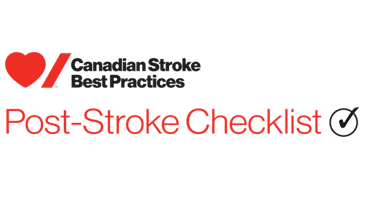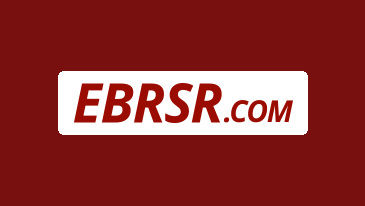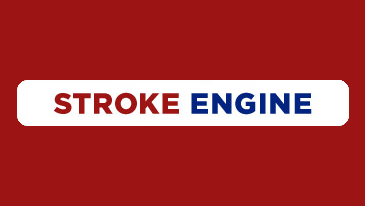- Definition and Considerations
- 1. Initial Stroke Rehabilitation Assessment
- 2. Stroke Rehabilitation Unit Care
- 3. Delivery of Inpatient Stroke Rehabilitation
- 4. Outpatient and In-Home Stroke Rehabilitation (including Early Supported Discharge)
- 5.1 Management of the Upper Extremity Following Stroke
- 5.2. Range of Motion and Spasticity in the Shoulder, Arm and Hand
- 5.3. Management of Shoulder Pain & Complex Regional Pain Syndrome (CRPS) following Stroke
- 6.1. Balance and Mobility
- 6.2. Lower Limb Spasticity following Stroke
- 6.3. Falls Prevention and Management
- 7. Assessment and Management of Dysphagia and Malnutrition following Stroke
- 8. Rehabilitation of Visual and Perceptual Deficits
- 9. Management of Central Pain
- 10. Rehabilitation to Improve Language and Communication
- 11. Virtual Stroke Rehabilitation
Recommendations
- Spasticity and contractures may be managed by antispastic pattern positioning, range-of-motion exercises, and/or stretching [Evidence Level: Early-Level C; Late-Level B].
- Chemo-denervation using botulinum toxin can be used to reduce spasticity, increase range of motion, and improve gait, for patients with focal symptomatically distressing spasticity [Evidence Level: Early – Level C; Late-Level A].
- Note, caution should be taken when delivering botulinum toxin in the early phase while patients are still recovering.
- Oral medications can be considered for the treatment of disabling spasticity, however, side effects of fatigue and drowsiness are common and benefits for treating spasticity tend to be marginal.
- Tizanidine can be used to treat more generalized, disabling spasticity. [Evidence Levels: Early-Level C; Late-Level B].
- Baclofen can be used as a lower cost alternative to treat more generalized disabling spasticity [Evidence Levels: Early-Level C; Late-Level C].
- Benzodiazepines should be avoided due to sedating side effects, which may impair recovery [Evidence Level: Early-Level C; Late-Level C].
- Intrathecal Baclofen should be considered for specific cases of severe intractable and disabling/painful spasticity [Evidence Level: Late-Level B].
Spasticity, defined as a velocity dependent increase of tonic stretch reflexes (muscle tone) with exaggerated tendon jerks can be painful, interfere with functional recovery and hinder rehabilitation efforts. If not managed appropriately, stroke survivors may experience a loss of range of motion at involved joints of the ankle and foot, which can cause difficulties with ambulation.
To achieve timely and appropriate assessment and management of lower limb spasticity the organization requires:
- Organized stroke care, including stroke rehabilitation units with a critical mass of trained staff and an interdisciplinary team during the rehabilitation period following stroke.
- Initial and ongoing assessments performed by clinicians experienced in stroke rehabilitation both in hospital and in the community.
- Assessment for an orthotic/splint/brace should be considered to ensure safety.
- Timely access to specialized, interdisciplinary stroke rehabilitation services as defined within the best practice recommendations.
- Timely access to appropriate intensity of rehabilitation for stroke survivors as defined within the best practice recommendations.
- Funding for chemodenervation and associated post injection rehabilitation services where necessary. May require access to electromyography or ultrasound to facilitate localization of the motor points for injections.
- The development and implementation of an equitable and universal pharmacare program, implemented in partnership with the provinces, designed to improve access to cost-effective medicines for all people in Canada regardless of geography, age, or ability to pay. This program should include a robust common formulary for which the public payer is the first payer.
- Extent of change in functional status scores using a standardized assessment tool (e.g., FIM® Instrument) from admission to an inpatient rehabilitation program to discharge (average and median).
- Extent of change in lower limb functional status using a standardized assessment tool (e.g., Chedoke-McMaster Stroke Assessment sub scale) from admission to an inpatient rehabilitation program to discharge.
- Extent of change in lower limb spasticity scores using a standardized assessment tool (e.g., Modified Ashworth Scale) from admission to an inpatient rehabilitation program to discharge.
- Median length of time from stroke admission in an acute care hospital to assessment of rehabilitation potential by a rehabilitation healthcare professional.
- Median length of time spent in active rehabilitation on a stroke rehabilitation unit during inpatient rehabilitation.
- Median total length of time spent on a stroke rehabilitation unit during inpatient rehabilitation.
Measurement Notes:
- Ensure consistency in start time for all time-based measures, and document the definition of start and stop times for transparency and replication.
Health Care Provider Information
- Table 1: Stroke Rehabilitation Screening and Assessment Tools
- FIM® Instrument
- AlphaFIM® Instrument
- hedoke-McMaster Stroke Assessment
- Modified Ashworth Scale
- Stroke Engine
Information for People with Stroke, their Families and Caregivers
- Taking charge of your stroke recovery: Rehabilitation and recovery infographic
- Taking charge of your stroke recovery: Transitions and community participation infographic
- Aphasia Institute
- Post Stroke Checklist
- Stroke Resources Directory
- Your Stroke Journey
- Stroke Engine
Evidence Table and Reference List
Few studies have been published examining the prevention or treatment of spasticity or contracture using antispastic pattern positioning, range of motion exercises, stretching and/or splinting in the lower extremity. Kluding et al. (2008) reported that eight sessions of functional task practice combined with ankle joint mobilizations, provided over four weeks, resulted in increased ankle range of motion, compared with a group that received therapy only, in the chronic stage of stroke. The participants in the intervention group gained 5.7 degrees in passive ankle range of motion compared with 0.2 degrees in the control group (p<0.01).
The use of Botulinum toxin–type A (BTX-A) for treatment of lower-limb spasticity is not as well-studied compared with the upper extremity. A meta-analysis (Foley et al. 2010), which included the results from 8 studies reported a moderate increase in gait speed associated with BTX-A (SMD= 0.193±0.081, 95% CI 0.033 to 0.353, p<0.018). Kaji et al. (2010) randomized 120 patients with lower limb spasticity following a stroke of greater than six months post onset to receive a single treatment of 300 U Botox® or placebo. There was a significantly greater reduction in mean modified Ashworth Scale scores at weeks four, 6 and 8 in the treatment group compared with the control group; however, there were no significant differences between groups at week 10 or 12. Pittock et al. (2003) compared escalating doses of BTX-A with placebo and found that the highest dose (1,500 U Dysport ®) was associated with the greatest relief of calf spasticity compared with placebo at four, eight and 12 weeks following treatment. Lower doses (500 and 1,000 U) resulted in significant reductions in spasticity at week four only.
Intrathecal baclofen is popular treatment for spasticity in many populations including stroke, spinal cord injury, and cerebral palsy. Meythalar et al. (2002) performed a cross-over randomized controlled trial among individuals with chronic stroke. At one year the authors noted that spasticity had improved, as evidenced by a decline in Ashworth scores and reflex scores (p<0.01 for both); spasm frequency scores did not improve (p>0.05).





